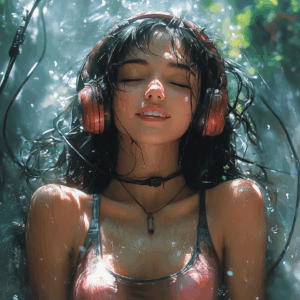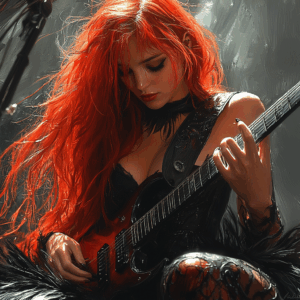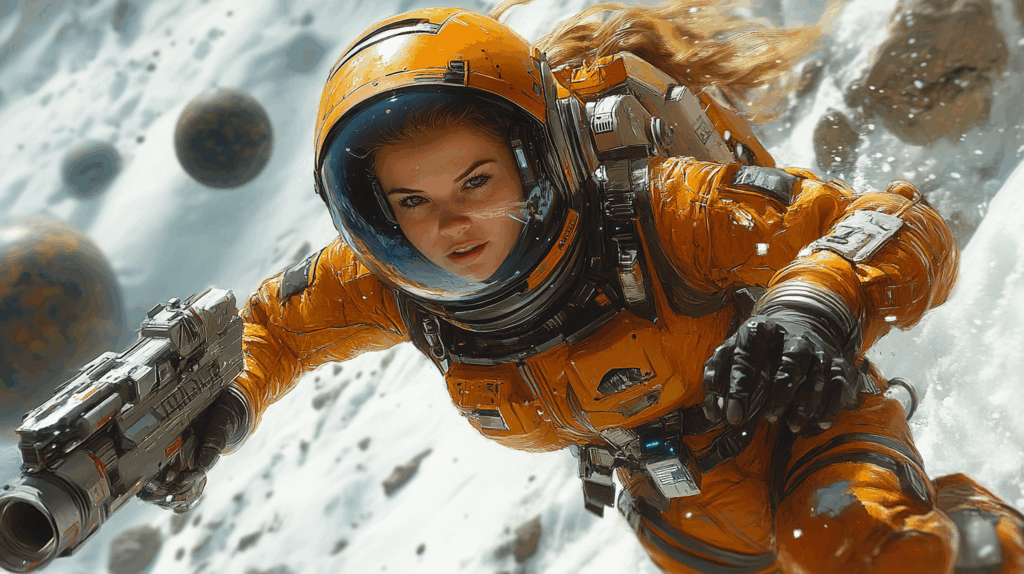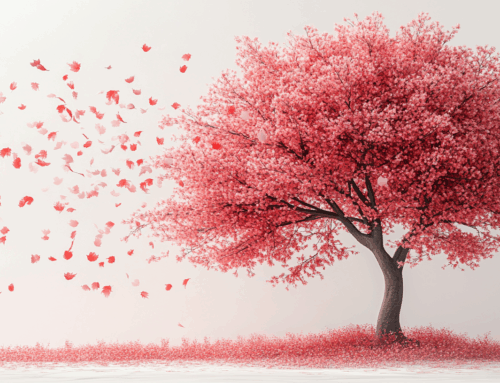What Is Production Music? A Complete Guide for Creators & Brands
Ever spent hours editing the perfect video, only to realize it feels… flat? The visuals are tight, the message is clear — but something’s missing. That emotional punch. The energy. The vibe.
That “something” is usually the music.
But here’s the catch: you can’t just throw your favorite Drake song into a YouTube video or client ad and call it a day. Copyright laws will shut that down faster than you can say “content strike.” In fact, over 98% of YouTube copyright claims are related to music use (source: YouTube Help Community). Wild, right?
That’s where production music comes in. It’s the secret weapon for filmmakers, marketers, YouTubers, and brands who want high-quality audio without legal headaches.
In this post, you’ll learn exactly what production music is, how it works, where to find great tracks, and how to use them to make your content sound as good as it looks. Let’s dive in.
What Is Production Music?
Production music is music that’s specifically composed for use in media — think videos, podcasts, commercials, films, video games, and even corporate presentations. Unlike mainstream tracks from popular artists, production music is made to support visuals or storytelling without stealing the spotlight. It’s designed to enhance a mood, build emotion, or keep the energy flowing — all while being legally safe and easy to license.
In simple terms, it’s music made for creators like you and me. I learned this the hard way years ago when I used a catchy song in a client’s promo video — and it got flagged within hours of being uploaded. We had to pull the campaign, re-edit the video, and license a proper track. Lesson learned: always use licensed production music to save yourself from takedowns, fines, or awkward client calls.
Here are some practical examples of how production music is used:
- YouTube videos: A lo-fi beat under a tech tutorial to keep viewers engaged
- Podcasts: Upbeat intro and outro music that sets the tone for the show
- Commercials: Cinematic background tracks that stir emotion and sell the story
- Corporate videos: Neutral, professional music that supports branding without distracting
- Mobile games: Loopable soundtracks that keep players immersed and entertained
Production music isn’t just filler — it’s a storytelling tool. And when used right, it can make your project feel polished, professional, and emotionally impactful.

Why Use Production Music?
Whether you’re creating a YouTube vlog, a product demo, or a branded podcast, the music you choose can make or break your content. Production music offers a legal, affordable, and professional way to bring your media to life — without the headaches of copyright claims or expensive licensing fees. It’s designed to be accessible, easy to license, and versatile enough to fit just about any project.
I once worked on a short travel documentary for a tourism board. We were on a tight deadline and budget, so using commercial music was out of the question. I turned to a production music library, found a cinematic instrumental track that perfectly matched the tone, and had full rights to use it — all within an hour. That track ended up elevating the whole film and helped the client win an industry award. It was a game-changer.
Here’s why production music is a go-to tool for creators:
- Avoid copyright issues: No takedowns, demonetization, or lawsuits when using properly licensed tracks
- Budget-friendly: Royalty-free music libraries offer pro-quality audio without high licensing costs
- Time-saving: Find and license tracks quickly instead of waiting weeks for label approvals
- Flexible use: Use across multiple platforms — YouTube, Instagram, client work, podcasts, and more
- Mood control: Set the emotional tone of your content without distracting from your message
Bottom line? Production music gives you creative freedom and legal peace of mind. You get pro-grade audio that fits your project — without the drama.

Types of Production Music Licenses
When it comes to using production music legally, not all licenses are created equal. Understanding the different types of music licenses can save you from expensive mistakes, especially if you’re publishing your work on platforms like YouTube, TV, or in paid advertising. The two most common types you’ll run into are royalty-free and rights-managed — and knowing the difference can make all the difference.
In my early freelance days, I once bought a song labeled as “royalty-free” and used it in multiple client videos. A few months later, one client got flagged because the license I bought was only for personal use — not commercial. I had assumed “royalty-free” meant “do whatever you want.” Spoiler: it doesn’t. That little oversight ended up costing me both time and reputation. Now, I always read the license terms before downloading anything.
Here’s a breakdown of the main types of production music licenses:
- Royalty-Free Music:
- Pay once, use it forever (within agreed terms)
- Great for YouTube, social media, and personal projects
- Example: A content creator buys a lo-fi beat to use in all their vlog intros
- Rights-Managed Music:
- Pricing depends on how, where, and how long you’ll use the track
- More exclusive, higher quality, often used in broadcast or film
- Example: A commercial ad agency licenses a track for a national TV spot for 6 months
- Creative Commons Licenses:
- Some tracks are free to use with attribution or under specific conditions
- Not always safe for commercial use, so read the fine print
- Example: A podcaster uses a CC BY track and gives credit in the show notes
- Subscription-Based Licensing:
- Pay monthly/yearly to access a library with flexible usage rights
- Ideal for freelancers and agencies producing frequent content
- Example: A video editor uses Artlist to pull multiple tracks for various client projects
- Sync Licenses (Synchronization):
- Allows music to be synced with visual content (video, games, ads)
- Usually included in most royalty-free or rights-managed terms
- Example: A wedding videographer licenses a song to use under highlight reels
Licensing can feel like a maze at first, but once you understand the basics, it’s empowering. You gain confidence knowing you’re covered — legally and creatively.
Where to Find Quality Production Music
The internet is packed with music libraries — but finding quality production music that fits your style, budget, and licensing needs? That’s where things can get tricky. Some platforms offer beautiful, cinematic tracks. Others are overloaded with generic elevator music. Knowing where to look can save you hours and elevate your entire project.
When I was producing a mini-documentary a few years ago, I needed a track that felt both inspiring and subtle. I spent two frustrating days sifting through clunky stock music sites that either sounded like ringtone leftovers or cost way beyond the project’s budget. Eventually, I discovered Artlist — clean interface, great search filters, and the track I used ended up becoming the heartbeat of the whole video. Since then, I’ve built a go-to list of reliable platforms.

Here are some of the best places to find high-quality production music:
- Artlist
- Subscription-based with unlimited downloads
- Excellent for cinematic, emotional, and modern-sounding tracks
- Great for YouTubers
- Epidemic Sound
- Royalty-free, subscription model
- Built-in tools for stems and track customization
- Ideal for vloggers, social media creators, and streamers
- Soundcritters
- Royalty Free Music – with exclusive Access to the library
- Mainly Epic and Cinematic Music Productions on a high quality level
- Great for Trailermusic, Filmmakers, Youtube and Advertising Agencies
- AudioJungle (by Envato)
- Pay-per-track model
- Massive library with a wide range of styles and price points
- Useful for one-off commercial projects or small businesses
- PremiumBeat
- Curated, high-quality collection with clean licensing
- Professional-grade tracks often used in corporate or ad work
- Offers standard and extended licenses
- Free Music Archive (FMA) or ccMixter
- Free music under Creative Commons licenses (read terms carefully!!)
- Good for indie creators or passion projects with zero budget
- Licenses can change anytime so watch out for the terms and conditions
The key is not just finding the right platform — it’s using filters, mood tags, and preview tools to find the perfect track for your specific project. Don’t settle for music that “kinda works.” Your audience can feel the difference.
How to Choose the Right Track for Your Project
Choosing the right production music isn’t just about picking a song you like — it’s about choosing one that enhances your message and matches the tone of your visuals. The best track blends so seamlessly with your content that viewers feel the emotion without even realizing where it’s coming from. It’s less about volume, and more about vibe.
I once edited a product launch video for a tech startup and picked a dramatic orchestral track because it sounded “epic.” It was epic — but way too heavy for a clean, modern tech demo. The client felt the music made the product feel overly intense. I swapped it out for a minimal electronic track, and suddenly everything clicked. The lesson? Music shouldn’t just sound good — it needs to fit.
Here’s what to consider when choosing a track:
- Match the mood
- Ask: How do I want the audience to feel? Inspired? Relaxed? Energized?
- Example: A charity PSA might call for emotional piano, while a fitness ad needs high-energy beats
- Pace and timing
- Choose music that syncs with your edit — or plan your cuts around the rhythm
- Example: Use faster tempos for action shots, slower tempos for reflective moments
- Don’t overpower the message
- Avoid music with vocals if someone’s speaking, unless it’s very subtle
- Example: In explainer videos, ambient or light acoustic tracks help the voiceover stand out
- Stay consistent with your brand
- Your audio should reflect your visual style and brand identity
- Example: A sleek tech brand may lean toward clean synths, while a travel blog might use indie folk
- Test a few options
- Sometimes it takes a few tries to find “the one” — preview tracks with your visuals to see what clicks
- Example: I often download 3–5 tracks before committing to the final choice
Think of music as your project’s emotional compass. When you get it right, you don’t just support the story — you elevate it.
Tips for Using Production Music Effectively
Getting the license and picking the perfect track is just step one — how you use production music can make all the difference between a polished, professional project and something that feels off. Good music placement doesn’t call attention to itself; it supports the story, complements the pacing, and fits the emotional beats of your content.
Early in my editing career, I made the rookie mistake of leaving background music at full volume under dialogue in a short film. It sounded fine in headphones, but on regular speakers, it completely overpowered the actors. Since then, I’ve made it a rule to always test audio on multiple devices and adjust levels for clarity and balance. Small tweaks like that can totally change the viewer experience.
Here are some practical tips for using production music like a pro:
- Adjust your audio mix
- Keep music lower during dialogue or narration (aim for -18 to -24 dB under voice)
- Example: In a podcast intro, start with music loud, then dip under the host’s voice
- Use loops or stems when available
- Many libraries offer alternate versions: intros, outros, and stems for custom edits
- Example: Loop a 30-second track behind a tutorial segment without awkward cuts
- Let the music breathe
- Don’t be afraid of silence — sometimes a music break creates more impact
- Example: Fade out the track before a key reveal in a video, then bring it back for emphasis
- Match transitions to musical cues
- Sync cuts or effects with beats or shifts in the music to enhance flow
- Example: Cut to a new scene right as the music hits a downbeat or tempo change
- Keep branding in mind
- Use consistent styles across videos to create a recognizable audio identity
- Example: A creator might use the same upbeat track style across all YouTube intros to build familiarity
Great music editing is subtle but powerful. It’s not about showing off the track — it’s about supporting your story in a way that feels natural, intentional, and emotionally resonant.

Common Myths About Production Music
Despite how useful production music is, there are still a lot of misunderstandings floating around — especially among newer creators and small business owners. Some assume it’s low quality, others think “royalty-free” means completely free, and many don’t realize they still need licenses even if a track sounds generic. These myths can lead to copyright issues, bad audio choices, or missed opportunities to improve content.
I once had a client who refused to use production music because they believed it would make their brand “sound cheap.” So, they tried using a popular song without a license. That video got pulled from both Facebook and YouTube within 48 hours. After a gentle “I told you so,” we replaced it with a cinematic royalty-free track — and the new version actually performed better because the tone fit the content more precisely. Lesson learned: production music isn’t a downgrade — it’s a smart creative tool.
Here are some of the most common myths — and the truth behind them:
- Myth 1: Royalty-free means free
- Reality: It means you don’t have to pay recurring royalties — but you still need to buy a license.
- Example: A $29 one-time purchase gives you legal use forever (with proper terms).
- Myth 2: Production music is low quality or generic
- Reality: Top libraries hire talented composers and sound designers. Many tracks rival commercial releases.
- Example: Sites like Artlist and Epidemic Sound offer cinematic, album-worthy tracks used in Netflix-level content.
- Myth 3: I can use any music under 10 seconds
- Reality: There’s no “safe” length — even 3 seconds of copyrighted music can trigger takedowns.
- Example: A brand jingle using 5 seconds of a pop song still needs clearance.
- Myth 4: If it’s online and downloadable, it’s fair game
- Reality: Just because you can download a track doesn’t mean you have permission to use it.
- Example: Using a song from SoundCloud or TikTok without a license can still get flagged.
- Myth 5: You only need a license once for all projects
- Reality: Licenses are often project-specific — always check reuse terms.
- Example: A wedding videographer may need separate licenses for each client video, depending on the platform’s rules.
Understanding the truth behind these myths protects you legally and creatively. The right knowledge lets you use production music confidently and effectively — and makes your content better for it.
Conclusion: What Is Production Music? A Friendly Breakdown
Alright, let me paint a familiar picture. You’ve just spent way too many hours editing a video — visuals are clean, messaging’s on point… but something’s just off. It feels flat. Like it’s missing that spark.
Spoiler: it’s usually the music.
Now, I get it — your first instinct might be to drop in your favorite Drake or Taylor Swift track and call it a day. But yeah, no. That’ll get your content flagged faster than you can hit “publish.” Seriously, over 98% of YouTube copyright claims are tied to music use. Crazy, right?
That’s why production music exists. It’s your behind-the-scenes hero — music created specifically for video, film, podcasts, games, ads, and everything in between. It gives your content emotion, momentum, and that polished feel — all without giving a copyright lawyer a reason to email you.
I learned the hard way early in my freelance days. I used a catchy pop song in a promo vid for a client. Looked and sounded great… until YouTube smacked us with a takedown notice within hours. Cue me scrambling to swap in a licensed track, re-export, and re-upload. Since then? I stick to licensed production music. No drama, no surprises.
So what exactly counts as production music? Here’s the gist:
- 🎬 YouTube videos – Toss a chill lo-fi track under a tutorial to keep folks engaged
- 🎧 Podcasts – Use an upbeat jingle for your intro and outro to add some flair
- 📺 Commercials – Add a cinematic background to help sell the story
- 🧑💼 Corporate videos – Use neutral, clean tracks that support your message, not distract from it
- 🎮 Mobile games – Loopable music that adds immersion without annoying the player
Bottom line? Production music isn’t filler — it’s fuel for your story. And when you use it right, it makes everything feel tighter, more pro, and way more compelling.


